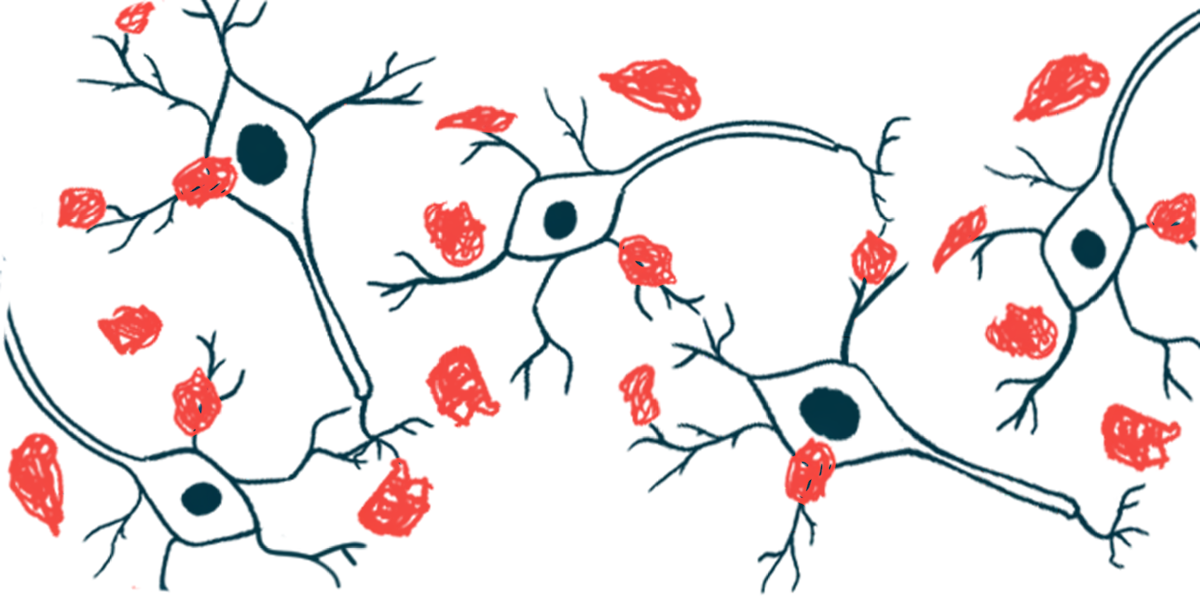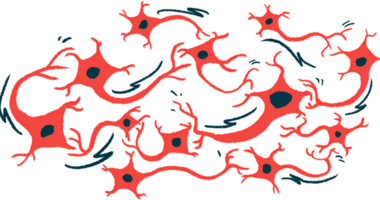Drug blocks toxic alpha-synuclein clumps in human brain tissue in lab
Data support move to Parkinson's clinical trials for Wavebreak's WTX-607

WTX-607, an oral small molecule being developed by Wavebreak, binds to and blocks the formation of small alpha-synuclein protein clumps — toxic aggregates linked to nerve damage in Parkinson’s disease and Lewy body dementia — in human brain tissue, according to new data released by the company.
The findings were presented at this year’s International Congress of Parkinson’s Disease and Movement Disorders, held last week in Honolulu. Titled “Patient-derived α-synuclein seed amplification as a tool for evaluating small molecule aggregation inhibitors for Lewy body disease therapeutics,” the presentation was given in an oral session at the annual conference.
The company noted that these new data complete earlier preclinical studies in which researchers had evaluated WTX-607. That data had shown that the experimental therapy was able to slow disease progression and improve cognitive function in models of Parkinson’s and Lewy body dementia.
Collectively, these results support WTX-607’s transition to clinical testing, according to the company.
“Parkinson’s disease and Lewy body dementia together affect more than 2.4 million people in the U.S., with significant unmet medical need,” Bart Henderson, CEO of Wavebreak, said in a company press release. “These human data demonstrate that WTX-607 works within brain tissue at the site of disease [development] and, in addition, stops [alpha]-synuclein aggregation with notable potency, at very low concentrations.”
Indeed, the treatment was found to reduce alpha-synuclein protein clumping by about 90% in certain testing.
“Cumulatively, our preclinical results provide a strong foundation for the initiation of Phase 1 clinical trials that are designed not only to demonstrate [the] safety of WTX-607 in patients with Parkinson’s disease and Lewy body dementia, but also to establish biological activity at clinically relevant doses,” Henderson said.
In both Parkinson’s and Lewy body dementia, single molecules of alpha-synuclein — a protein normally involved in nerve cell communication — can misfold and start to clump together.
These small clusters, made up of just a few protein units and known as oligomers, can spread from one nerve cell to another and, over time, grow into long, thread-like fibrils that eventually form dense deposits inside brain cells. Those deposits are called Lewy bodies.
WTX-607 targets earliest step of alpha-synuclein protein clumping
It is increasingly recognized that alpha-synuclein in its oligomer form is particularly toxic. These small clumps disrupt cellular function and progressively lead to the death of specific nerve cells, driving the hallmark symptoms of Parkinson’s and Lewy body dementia — including movement problems, memory loss, and cognitive decline.
WTX-607, formerly WTX-A, is designed to block the earliest step in this process, known as nucleation, when single alpha-synuclein molecules first begin to clump together. By doing so, the therapy aims to reduce the spread of toxic aggregates between nerve cells, potentially slowing disease progression in Parkinson’s and Lewy body dementia, and restoring cognitive function, according to the company.
Earlier lab studies showed that WTX-607 can inhibit up to 93% of primary nucleation — the process by which single protein molecules form oligomers — and up to 95% of secondary nucleation, in which existing aggregates act as seeds that promote new clump formation.
In different cell and mouse models of disease, WTX-607 reduced the formation of alpha-synuclein oligomers and aggregates, and in some models, restored cognitive function, the company said.
Now, researchers have shown that WTX-607 binds directly to alpha-synuclein aggregates in human brain tissue samples from people with Parkinson’s disease and Lewy body dementia, and multiple system atrophy, another disease marked by the accumulation of alpha-synuclein clumps.
Specifically, researchers at the Perelman School of Medicine at University of Pennsylvania — led by coinvestigator Kelvin Luk, PhD, associate professor of pathology and laboratory medicine and a scientific advisor to Wavebreak — showed that when dye-tagged WTX-607 was applied to thin slices of patient brain tissue, it produced strong fluorescent signals comparing with healthy control samples. These overlapped with areas containing alpha-synuclein protein clumps.
[The methods developed for testing drug candidates using brain tissue of Parkinson’s and Lewy body dementia patients have] unlocked the capability to assess on-target engagement and efficacy for inhibiting [alpha-synuclein protein] aggregation.
In a seed amplification assay, which was modified to measure how quickly alpha-synuclein clumps can grow when seeded with misfolded protein derived from patient brain tissue, low amounts of WTX-607 reduced alpha-synuclein aggregation by about 90%.
“The data we are presenting in this study is the first that demonstrates small molecule target engagement and potency for inhibiting [alpha]-synuclein aggregation seeded from patient brain tissue at therapeutically relevant drug concentrations,” Luk said.
According to Luk, the methods the team developed to test experimental therapies ex vivo — meaning outside the body; here, in the lab — using brain tissue from individuals with Parkinson’s and Lewy body dementia have “unlocked the capability to assess on-target engagement and efficacy for inhibiting [alpha-synuclein] aggregation.”
Further, Luk said, the strategy “has predictive potential for progression to cognitive impairment” in patients.
For its part, Wavebreak called WTX-607 “a first-in-class small molecule clinical candidate for the treatment of Parkinson’s disease and Lewy body dementia.”







